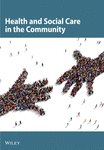Bridging the gap: using direct payments to purchase integrated care
Abstract
This paper reports on a study of disabled people with receiving Direct Payments who were able to purchase assistance in ways that cross conventional boundaries between ‘health’ and ‘social’ services. Indeed, most of the Direct Payment recipients used the term ‘personal care’ to describe a range of help that extended right across this conventional divide. Nevertheless, most of the users reported purchasing help with aspects of health care through their Direct Payments, including physiotherapy, management of incontinence, chiropody, changing dressings and sustaining tissue viability. They chose to purchase this help from their personal assistants (PAs) because statutory services were not available, had been withdrawn, or because they were able to retain greater independence and control over their lives compared with receiving conventional services. Many Direct Payment users wanted more opportunities to purchase a range of health-related services, although this also raised questions about training, supervision and the professionalisation of flexible personal assistance. The paper concludes that health purchasers may need to consider contributing to Direct Payments in acknowledgement of the health care which such schemes are currently providing.




